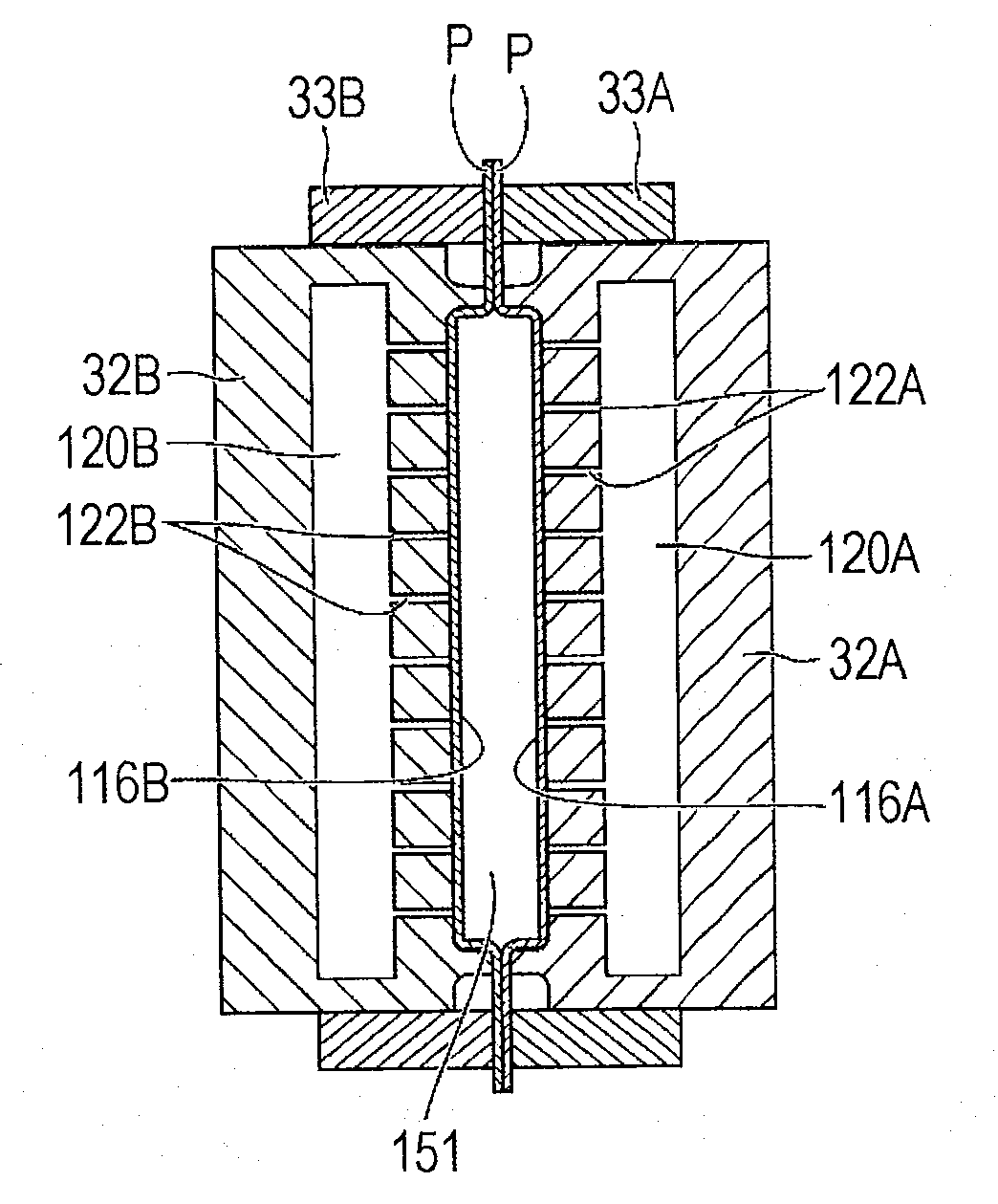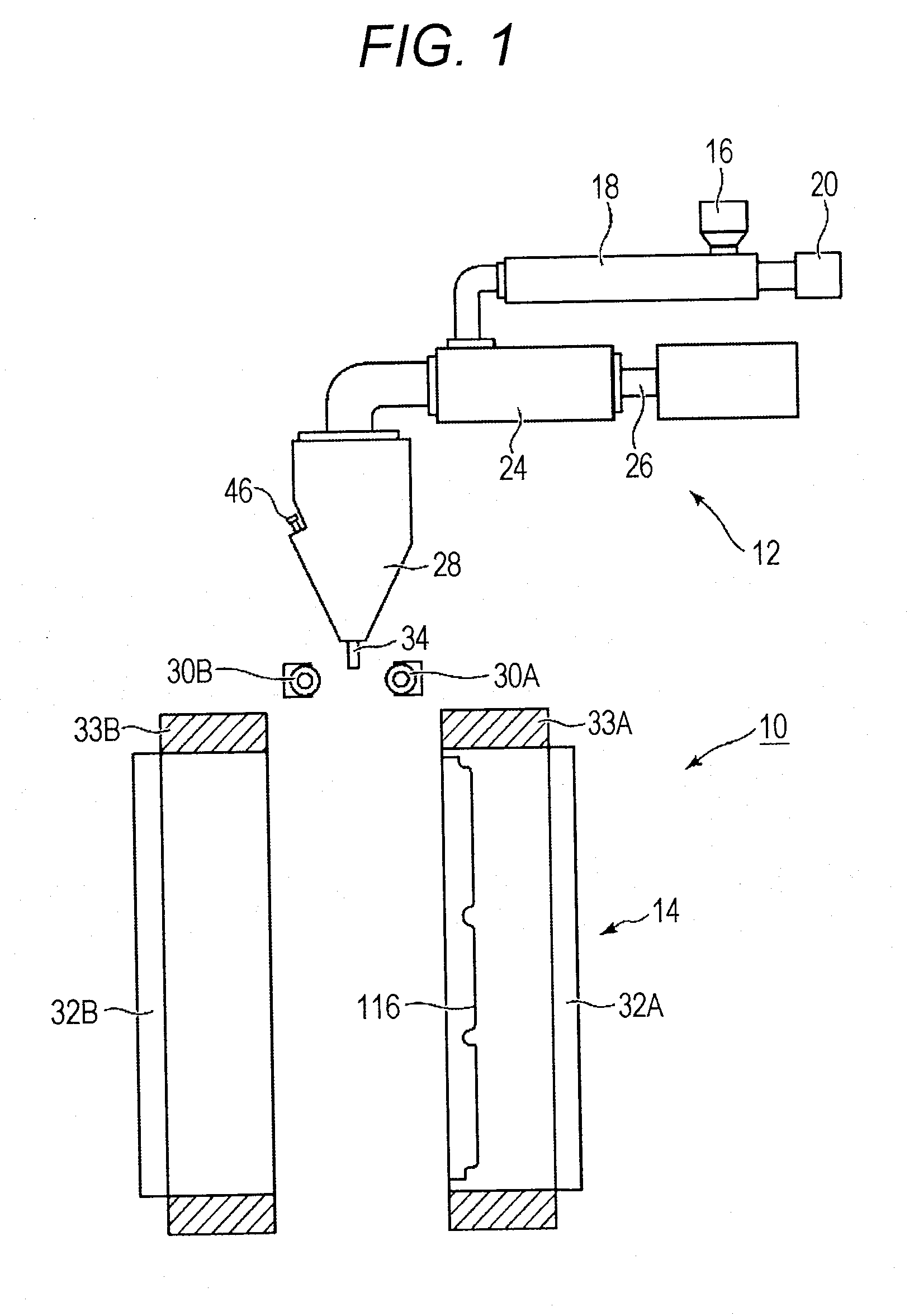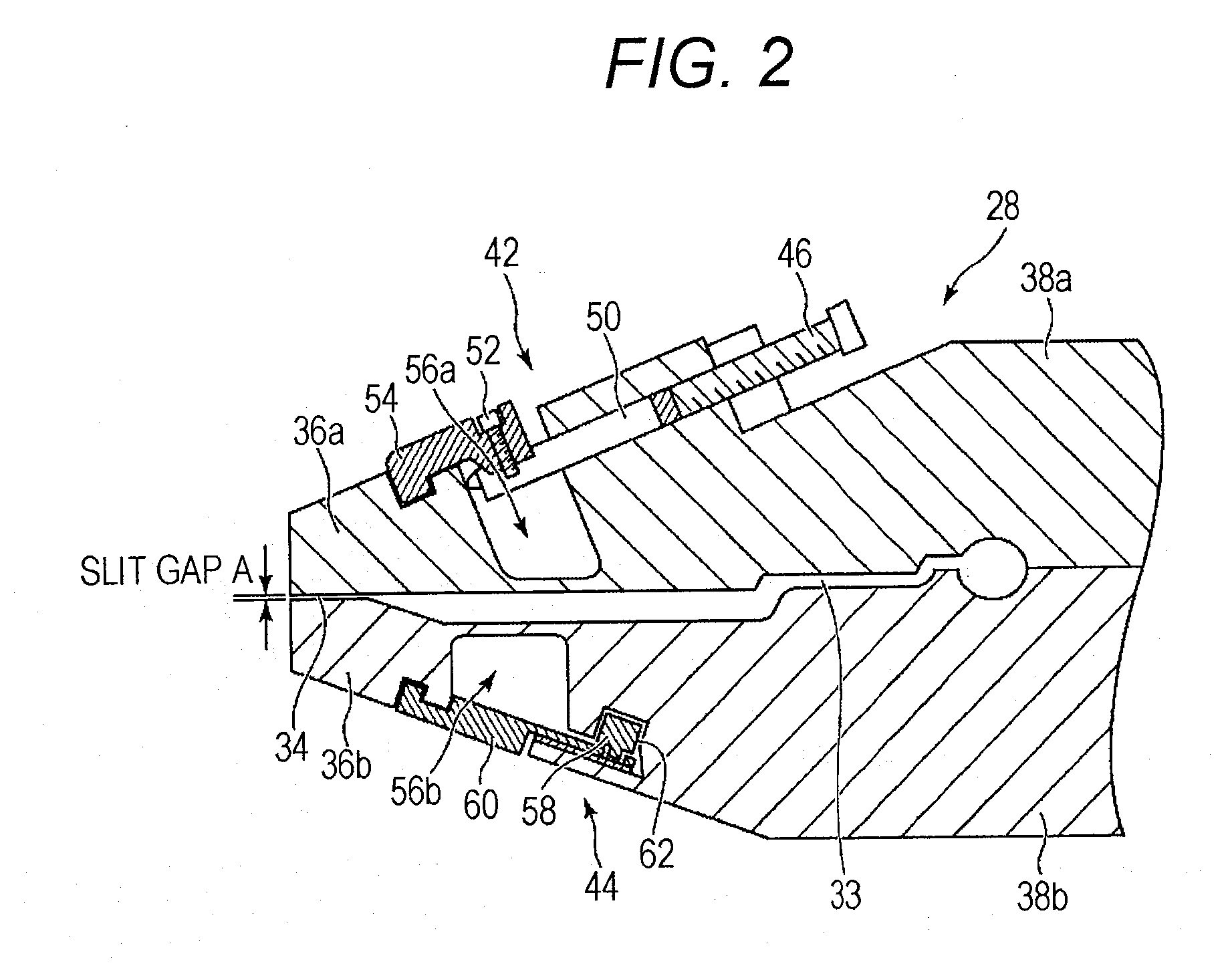Method for forming resin molded articles
a technology of resin molded articles and molded parts, which is applied in the field of resin molded article forming, can solve the problems of uneven thickness of sheet sheets prior to forming in molds, affecting the forming efficiency of molten resin, and affecting the forming efficiency of sheet materials, so as to ensure the effect of forming efficiency
- Summary
- Abstract
- Description
- Claims
- Application Information
AI Technical Summary
Benefits of technology
Problems solved by technology
Method used
Image
Examples
Embodiment Construction
[0052]A resin molded article forming apparatus according to a first embodiment of the present invention will be described in detail below with reference to the accompanying drawings. A resin molded article according to this embodiment is a single sheet-shaped molded article. As shown in FIG. 1, a resin molded article forming apparatus 10 includes an extruder 12 and a clamping device 14 arranged below the extruder 12. The forming apparatus 10 feeds a sheet-shaped molten resin P, which is extruded from the extruder 12, to the clamping device 14 which then forms the sheet-shaped molten resin P.
[0053]The extruder 12 is of a conventionally known type, and the detailed description thereof will be omitted. The extruder 12 includes a cylinder 18 provided with a hopper 16, a screw (not shown) installed inside the cylinder 18, a hydraulic motor 20 coupled to the screw, an accumulator 24 whose inside is in communication with the cylinder 18, and a plunger 26 inserted into the accumulator 24. I...
PUM
| Property | Measurement | Unit |
|---|---|---|
| temperature | aaaaa | aaaaa |
| temperature | aaaaa | aaaaa |
| length | aaaaa | aaaaa |
Abstract
Description
Claims
Application Information
 Login to View More
Login to View More - R&D
- Intellectual Property
- Life Sciences
- Materials
- Tech Scout
- Unparalleled Data Quality
- Higher Quality Content
- 60% Fewer Hallucinations
Browse by: Latest US Patents, China's latest patents, Technical Efficacy Thesaurus, Application Domain, Technology Topic, Popular Technical Reports.
© 2025 PatSnap. All rights reserved.Legal|Privacy policy|Modern Slavery Act Transparency Statement|Sitemap|About US| Contact US: help@patsnap.com



